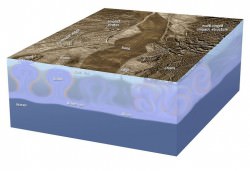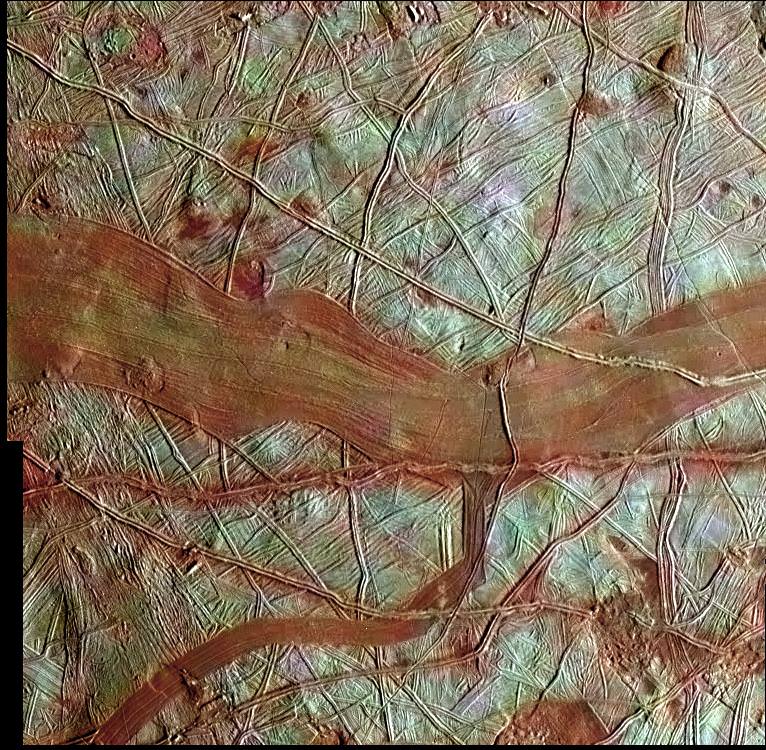Eureka – it’s Europa! And a brand-new image of it, too! (Well, kinda sorta.)
The picture above, showing the icy moon’s creased and cracked surface, was made from images acquired by NASA’s Galileo spacecraft during its exploration of Jupiter and its family of moons in 1997 and 1998. While the data itself isn’t new per se the view seen here has never been released by JPL, and so it’s new to you! (And to me too.)

The original high-resolution images were acquired on Nov. 6, 1997, in greyscale and colorized with data acquired during a later pass by Galileo in 1998. The whiter areas are regions of relatively pure water ice, while the rusty red bands are where ice has mixed with salts and organic compounds that have oozed up from deeper within Europa.
Read more: Hydrogen Peroxide Could Feed Life on Europa
The entire image area measures about 101 by 103 miles across (163 km x 167 km).
Europa has long been one of the few places we know of outside our own planet where life could very well have evolved and potentially still exist. Getting a peek below the icy moon’s frozen crust — or even a taste of the recently-discovered water vapor spraying from its south pole — is all we’d need to further narrow down the chances that somewhere, something could be thriving in Europa’s subsurface seas. Get a planetary scientist’s perspective in a video interview with Dr. Mike Brown here.
Launched in October 1989, the Galileo spacecraft arrived at Jupiter in December 1995. Through primary and extended missions Galileo explored the giant planet and its family of moons until plunging into Jupiter’s atmosphere on September 21, 2003. Learn more about Galileo here, and check out some of the amazing images it acquired on the CICLOPS imaging diary page here.
Source: NASA’s Planetary Photojournal

